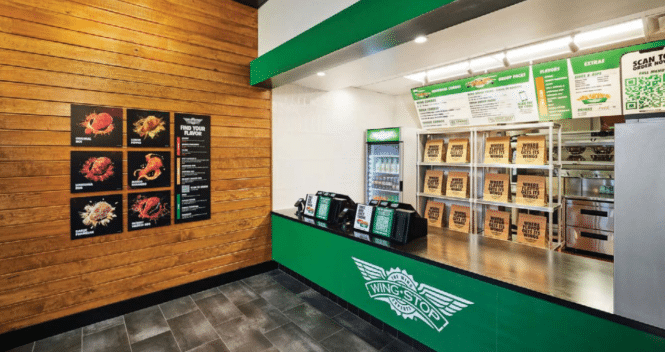
Personalization is Most Popular Item on the Menu
In the article on personalization, Jay Burdette of Panasonic Connect discusses how fast casual restaurants provide a sense of comfort to customers by offering consistent experiences. However, with the integration of technology into day-to-day operations, customers now expect personalized experiences.
Personalization is a top priority for consumers, with 91% of customers more likely to shop with brands that provide them with relevant offers and recommendations. While tailored customer experiences are a must-have for consumers, there is a disconnect between customer need and business execution. Marketing executives struggle to provide tailored experiences to customers, with 63% of them facing challenges in this regard.
Jay suggests that technology is a great place to start to master the art of personalization. Self-order kiosks are one such technology that can help businesses provide personalized experiences to customers. These kiosks let customers order at their own pace, which boosts customer experience and typically results in larger orders. Self-order kiosks that use facial recognition software remembers customers’ past orders and immediately let them purchase those orders again. Integrated with payment software, these kiosks can also remember customers’ payment information.
Benefits of Self-Order Kiosks
- Order at your own speed
- Boosts the customer experience
- Larger orders are the usual outcome
- Facial recognition makes it easy for repeat orders
- Payment information can also be provided
James (Jay) Burdette is the senior director of the Enterprise Process Innovation Center at Panasonic Connect North America. Panasonic Connect is a B2B company offering device hardware, software, and professional services for the connected enterprise. James has near 20 years of experience working within the QSR, TSR, fuel and convenience, and retail industries, leading customers to significant business growth. Jay is a forward-thinking business strategist who is motivated by solving unique customer challenges. He strives to foster a collaborative environment within his teams that leads to true partnership. In his spare time, Jay is an avid motorcycle rider and has a passion for Harley Davidsons, having taken numerous interstate and cross-country rides with his family and friends.
More Panasonic Connect Self-Order Kiosk Resources
- https://na.panasonic.com/us/clearconnect/kiosk-solutions
- https://na.panasonic.com/us/clearconnect/kiosk-solutions
- https://na.panasonic.com/us/clearconnect/kiosk-solutions
From NRN
The rise of in-house tech stacks
As restaurant tech stacks start stacking higher, the need for custom technology platforms grows. At the end of 2023, several restaurant chains, including Wingstop, Yum Brands, Sweetgreen, and Restaurant Brands International announced plans to implement proprietary technology, and these restaurants will likely not be the last.
In 2024, expect more restaurant chains (especially larger companies) to announce investments in proprietary technology. Despite the upfront expense, the unobstructed access to data and custom builds could be worth it in the long-run —especially with restaurants that can invest in the necessary personnel.
“As organizations push for greater personalization, look to act on troves of data, and turn to innovative technology applications to elevate experiences, in-house software will become more popular,” said Jay Burdette, senior director of the Enterprise Process Innovation Center at Panasonic Connect North America. “This will open the door for new jobs … and will increase demand for best-in-class hardware that can optimally run these solutions.” – JF
Tech Stack from December 2023 NRN Top 52 Trends and Panasonic Connect
Comments
Is it our imagination or is software and applications migrating back into companies away from the SAAS model? Pretty sure Walmart is pulling the plug on Fastlane and NCR and doing their own. Comments from Burdette above support that hypothesis.
The technology choices made by restaurants can vary widely, and there is no one-size-fits-all answer to whether restaurants are migrating to in-house tech stacks or Software as a Service (SaaS) solutions. Different restaurants have different needs and resources, and their technology decisions may depend on factors such as size, budget, and specific business requirements.
That said, there has been a trend in recent years toward the adoption of technology in the restaurant industry. Many restaurants have incorporated SaaS solutions into their operations to streamline processes, improve customer service, and enhance overall efficiency. SaaS solutions offer several advantages, including ease of use, scalability, and cost-effectiveness. They can provide solutions for point-of-sale systems, reservations and booking, inventory management, online ordering, and more.
However, some larger or more established restaurants may choose to develop in-house tech stacks to have greater control over their technology solutions. This approach allows them to tailor their systems to their unique needs and potentially differentiate themselves from competitors. Building an in-house tech stack can be more resource-intensive in terms of time and money, but it can offer greater customization and control.
In conclusion, the choice between in-house tech stacks and SaaS solutions in the restaurant industry varies from one establishment to another. Many restaurants use a combination of both, integrating SaaS solutions for certain functions while developing in-house solutions for others. The decision ultimately depends on the specific needs, goals, and resources of each restaurant.
Good articles
- What is a restaurant tech stack
- There are three basic questions you should ask yourself when selecting which technology you are going to use in your stack.
- Question No. 1: Does this technology make my operation more productive?
- Question No. 2: Does this technology make the guest experience better?
- Question No. 3: Can I afford this technology?
- There are three basic questions you should ask yourself when selecting which technology you are going to use in your stack.

